


Top Link SA Travel and Consulting
Call us 27-
Email : info@toplink.co.za


South Africa Product -


Other Local Products












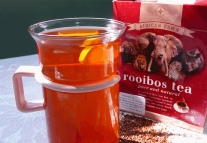
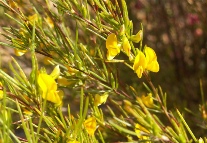

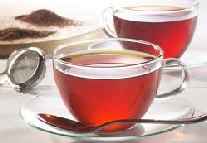
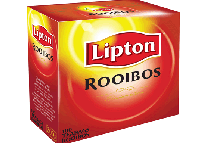
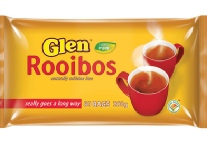
Rooibos Tea Facts
Rooibos is not a true tea, but a herb. The brew made from the dried Rooibos leaves is therefore a herbal infusion (known as a tisane) rather than a tea, but is widely known as Rooibos tea.
Rooibos has a distinctive colour, flavour and aroma, which differentiates it from most other teas. The flavour can be described as slightly sweet and fruity.
The vibrant amber colour of Rooibos comes from the natural colour that develops during the post-
Rooibos is a pure and natural product as it contains no colourants, additives or preservatives.
Rooibos has no kilojoules.
Rooibos is available as plain or flavoured tea, as loose leaves or in tea bags. It is often blended with other herbal teas.
Rooibos is graded according to colour, flavour, and cut length.
Rooibos ages well and can be stored for long periods without any deterioration in quality, flavour and taste.
In many countries Rooibos is enjoyed as a hot or cold beverage without milk, with or without sweeteners. Many South Africans enjoy Rooibos as a hot beverage with milk, sweetened with sugar or honey.
Rooibos Health Research
Scientists around the world are working on Rooibos to gain a better understanding of this unique, South African herbal tea. Some are investigating the health benefits of Rooibos and its potential to combat a range of diseases, while others are trying to understand exactly how the bioactive components in Rooibos work.
Scientific articles published over the last decade prove the therapeutic ability of Rooibos to fight cancer, protect the liver against disease, boost the immune system, as well as to relieve allergies and treat digestive disorders.
Most Rooibos researchers recommend using the complete Rooibos extract (tea) rather than taking individual, isolated compounds.
Rooibos studies from South Africa showed that people can get the optimum health benefit from drinking six cups of Rooibos spread throughout the day.
For summaries of recent health research findings, go to “Research Summaries”
Rooibos Health Facts
Rooibos is a good source of antioxidants and is the only known source of a potent antioxidant aspalathin, which could play a role in combating several lifestyle diseases.
Unlike black and green teas, Rooibos is naturally caffeine free (not decaffeinated) and therefore suitable for children, infants and breast-
Rooibos has proven cancer-
Rooibos contains low amounts of tannin. (Tannins are astringent, bitter-
After centuries of use, no negative side effects of Rooibos have ever been recorded.
More scientific evidence for the anti-
These promising findings about the anti-
A team of South African researchers has found more evidence suggesting rooibos may be beneficial in countering diabetes. Details of the study and a summary of other studies pointing to rooibos’ glucose-
According to findings published in the July 2013 edition of Phytomedicine, Rooibos can counteract insulin resistance in mouse muscle cells. A team of South African researchers found that an aspalathin-
In humans too, an excess of saturated free fatty acids in the bloodstream is associated with insulin resistance, a major risk factor in the development of type 2 diabetes. In a normal individual, the insulin hormone controls the entry of glucose into muscle and other cells to provide them with energy. In type 2 diabetics, the cells become numb, or resistant, to insulin. Glucose would then remain in the bloodstream, leading to high blood glucose levels that could potentially cause organ damage.
The World Health Organization (WHO) estimates that 439 million people will have diabetes by 2030, with the major increase occurring in developing countries.
Research carried out at the South African Medical Research Council (MRC), in collaboration with researchers from the Agricultural Research Council’s Infruitec-
Remarkably, glucose uptake by the insulin resistant-
An extract produced from fermented Rooibos also increased glucose uptake, but it was less effective than the green Rooibos extract.
The MRC's Dr Christo Muller says it is important to remember that these results do not prove that a cup of Rooibos is a cure for type 2 diabetes. "Here we are referring only to improving insulin sensitivity and the beneficial effects that Rooibos extracts have on regulating glucose levels,” he says. He cautions that at this stage, the scientific evidence only suggests that Rooibos might have anti-
To understand how Rooibos decreased insulin resistance in the mouse cell line, the scientists measured various proteins involved in glucose uptake and metabolism. Their experiments indicated that Rooibos extracts may work by ultimately causing a protein known as glucose transporter type 4 (GLUT4) to become more abundant in the cell. GLUT4 acts like a shuttle that transports glucose into the cell.
These latest findings formed the basis of Sithandiwe Mazibuko’s PhD research at the MRC and the University of Zululand. The research was funded by the National Research Foundation’s Thuthuka programme and the MRC’s Diabetes Discovery Platform.
Previously, the same group at the MRC, in collaboration with researchers of the Agricultural Research Council, demonstrated that the same aspalathin-
